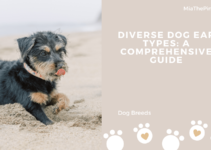Understanding Bloat in Dog Breeds: Causes, Symptoms, and Prevention
When it comes to our beloved canine companions, their health and well-being are of utmost importance. One health concern that dog owners should be aware of is bloat. Bloat, also known as gastric dilatation-volvulus (GDV), is a serious condition that can affect certain dog breeds. Understanding the causes, symptoms, and preventive measures associated with bloat is crucial for every dog owner.
What is Bloat in Dogs?
Bloat occurs when a dog’s stomach fills with gas, food, or fluid, causing it to expand. In some cases, the stomach can twist, leading to a life-threatening situation. This twisting, known as volvulus, can obstruct blood flow to the stomach and other vital organs, causing tissue damage and potential organ failure.
Common Causes of Bloat in Dog Breeds
While the exact cause of bloat is still not fully understood, several factors have been identified as potential contributors. Large and giant dog breeds, such as Great Danes, St. Bernards, and Weimaraners, are more prone to bloat due to their deep chests and narrow waists. Rapid eating, consuming large meals, or drinking excessive amounts of water immediately before or after eating can also increase the risk of bloat.
Recognizing the Symptoms of Bloat in Dogs
Identifying the symptoms of bloat is crucial for early intervention and treatment. Some common signs of bloat in dogs include a visibly swollen or distended abdomen, unproductive attempts to vomit, restlessness, excessive drooling, pale gums, rapid breathing, and signs of discomfort or pain. If you notice any of these symptoms, it is essential to seek immediate veterinary care.
Understanding the Dangers of Bloat and its Impact on Dog Breeds
Bloat is a life-threatening condition that requires prompt medical attention. If left untreated, the twisted stomach can lead to tissue death, sepsis, and even death within a matter of hours. Additionally, dogs that have experienced bloat are at a higher risk of developing it again in the future. This highlights the importance of understanding the dangers associated with bloat and taking preventive measures.
Preventive Measures to Reduce the Risk of Bloat in Dogs
While it may not be possible to completely eliminate the risk of bloat, there are several preventive measures that dog owners can take. Feeding smaller, frequent meals instead of one large meal can help reduce the likelihood of bloat. Avoiding vigorous exercise immediately before or after meals and providing a calm environment during mealtime can also be beneficial.
Dietary and Lifestyle Adjustments to Minimize Bloat in Dog Breeds
Choosing an appropriate diet for your dog can play a significant role in minimizing the risk of bloat. Opting for a high-quality, balanced dog food that is formulated to prevent bloat may be beneficial. Additionally, using elevated feeding bowls, which promote slower eating and reduce air intake, can help prevent the occurrence of bloat. Regular exercise and maintaining a healthy weight are also essential for overall canine well-being.
In conclusion, bloat is a serious condition that can affect certain dog breeds. Understanding the causes, symptoms, and preventive measures associated with bloat is crucial for every dog owner. By being aware of the risks and taking appropriate steps to minimize them, we can ensure the health and happiness of our furry friends.
FAQs
What is Bloat in Dogs?
Bloat is a condition in which a dog’s stomach fills with gas, food, or fluid, causing it to expand. In some cases, the stomach can twist, leading to a life-threatening situation known as volvulus.
Common Causes of Bloat in Dog Breeds
Bloat is more common in large and giant dog breeds with deep chests and narrow waists, such as Great Danes and St. Bernards. Rapid eating, consuming large meals, or drinking excessive amounts of water before or after eating can also increase the risk of bloat.
Recognizing the Symptoms of Bloat in Dogs
Some common symptoms of bloat in dogs include a visibly swollen abdomen, unproductive attempts to vomit, restlessness, excessive drooling, pale gums, rapid breathing, and signs of discomfort or pain.
Understanding the Dangers of Bloat and its Impact on Dog Breeds
Bloat is a life-threatening condition that can lead to tissue death, sepsis, and even death within hours if left untreated. Dogs that have experienced bloat are at a higher risk of developing it again in the future.
Preventive Measures to Reduce the Risk of Bloat in Dogs
To reduce the risk of bloat, dog owners can feed smaller, frequent meals, avoid vigorous exercise before or after meals, and provide a calm environment during mealtime.
Dietary and Lifestyle Adjustments to Minimize Bloat in Dog Breeds
Choosing a high-quality, balanced dog food formulated to prevent bloat and using elevated feeding bowls to promote slower eating can help minimize the risk of bloat. Regular exercise and maintaining a healthy weight are also important.



